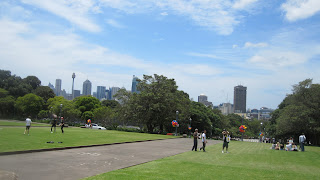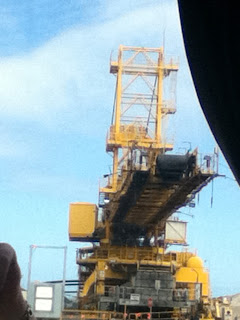Professor Geoff Dow of the University of Queensland in Brisbane was extremely kind to fly to Sydney for one day to give us this lecture and share his ‘compendium’ (using Frank Stillwell’s word) of statistics relating Australia to the world economy. One of the variables that Dow uses to compare Australia with the rest of the world was unemployment. In Dow’s view, a 0% unemployment rate would be healthy, although it would be extremely unfeasible and prevent movement. Yet, he said that it was essential to have unemployment under 4%, and that 2% was healthy. With Australia being a ‘lucky’ nation, it faired particularly well under the global financial crisis. With quick reaction from the government and its proximity to the Asian countries, unemployment numbers did not greatly increase. Looking into the past, Australia’s unemployment was 3.4% in the 70’s, 7.2% in the 80’s, 8.4% in the 90’s, 5.3% in the 2000’s, and in 2010-2011 it was 5.1%. The average over 1974-2004 was 6.6%. In comparison, the United States’ unemployment was 6.5%-70’s, 7.2%-80’s, 5.6%-90’s, 6.1%-2000’s, and 9.3% in 2010-2011. As one can see, the United States has been far more dramatically impacted by the global financial crisis in terms of unemployment figures. Unemployment shows the general stability of the country.
Another issue Geoff Dow brought up was that of public sector investment, which Frank Stillwell also touched on, found on pages 59 and 60. Investing less than 2% of its GDP in the public sector, there could be possible trouble for Australia. Professor Dow was particular cynical about the effect that the stimulus had upon Australians. Each Australian household received around $1000 to use however they would like, but many, as Dow would say, went out and bought plasma televisions and did not re-invest the money into a progressive outlet for Australia’s economy. If the government would have spent that money that they gave households on public works- such as the nations infrastructure, roads, water systems, railways, etc… Compared to countries like the US with a 2.6% of public sector investment and a general average of 2.8% investment, Australia is under the average and that could potentially be troublesome.
I chose to focus on the comparison on human development index trends and GDP per capita in 2010 on pages 19 and 20. GDP does not alone represent the full story of how a country is doing and the lives of its people, but it is a good figure to look at. Human development looks at more than population and income, it looks at the quality of life, education provided and health are factors present. In 2010, Australia had a GDP per capita that ranked 6th, but an impressive human development index 2nd in the world. That is a four point differential. The United States ranked 3rd in GDP per capita and 4th in its 2010 human development index. These two statistics show the major economies of the world in terms of GDP and how they relate on the human development index. Those that are presented in the top 30 in the human development index are all affluent. In both the USA and Australia, the quality of life ranks in the top 3 worldwide.
Outside of one of the old buildings at University of Sydney
Geoff Dow (Santa??)
Geoff Dow
The three economists: from left: Nesiba, Frank Stillwell, Geoff Dow


























